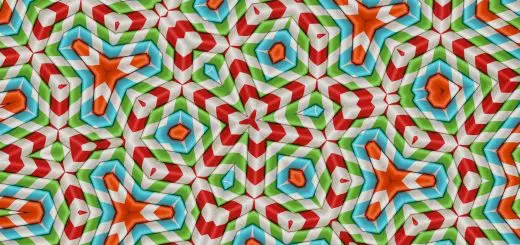Sacred Geometries: The Language of Universal Design

Before diving in, please note: This post is for informational purposes only. If you’d like to know more about how we approach topics, feel free to check out our friendly Disclaimer Page.
Hey there, amazing readers! 
We’re committed to delivering quality posts, and your support (even just sticking around despite the ads) means everything to us. So, bear with us, and thanks for helping us keep the good vibes rolling. Now, on to the fun stuff!
TRANSLATE BUTTON AT THE END OF THE ARTICLE
Overview
Sacred geometries have been revered throughout history as the language of universal design. These profound patterns and shapes hold a deep significance in various cultures, religions, and belief systems. From the intricate architecture of ancient temples to the mesmerizing artwork of the Renaissance, sacred geometries have been embraced as a means to express divine harmony and order.
In this article, we will explore the essence of sacred geometries and understand their role as the language of design. We will delve into the universal patterns that underlie these geometries and uncover the ancient wisdom they hold. Furthermore, we will discuss the presence of sacred geometries in nature, their manifestation in architecture and art, and their application in modern design. By embracing the universal language of form, we can bring balance, proportion, and harmony into our lives and creations.
The Essence of Sacred Geometries
At the heart of sacred geometries lies the belief that certain shapes and patterns hold divine qualities and embody the fundamental principles that govern the universe. These geometries are not arbitrary; they have been recognized and revered across different cultures throughout history. The essence of sacred geometries lies in their ability to convey a sense of harmony, balance, and interconnectedness.
Understanding the Language of Design
Sacred geometries can be seen as a language that transcends cultural and language barriers. They communicate through form, proportion, and symbolism, allowing for a deeper understanding and connection with the universal principles that govern creation. By studying and understanding this language, designers can tap into the inherent power of these geometries to create spaces and objects that resonate with a sense of beauty and harmony.
Exploring the Universal Patterns
Sacred geometries reveal the underlying universal patterns that govern the natural world. These patterns can be found in the spiral of a seashell, the branching of a tree, or the petals of a flower. They represent the inherent order and structure present in all things, from the microcosmic to the macrocosmic. By recognizing and incorporating these patterns in design, we can create spaces and objects that align with the natural rhythms of the universe.
The Ancient Wisdom of Sacred Geometries
The wisdom of sacred geometries can be traced back to ancient civilizations such as the Egyptians, Greeks, and Mayans. These cultures understood the profound significance of these geometries and incorporated them into their architecture, art, and religious practices. The Egyptian pyramids, for example, embody the principles of sacred geometry through their precise alignment and proportion. The Greeks, on the other hand, used sacred geometries in their temples and statues to symbolize divine harmony and perfection.
Unveiling the Hidden Harmonies
Sacred geometries have the power to unveil the hidden harmonies that underlie the fabric of reality. By studying these geometries, we can gain insight into the underlying order and structure of the universe. For example, the Flower of Life, a sacred geometry composed of overlapping circles, reveals the interconnectedness of all life forms and the unity of creation. This understanding can inspire designers to create spaces and objects that foster a sense of connection and unity.
The Role of Sacred Geometries in Nature
Nature is a living testament to the presence of sacred geometries. From the hexagonal cells of a beehive to the spiraling patterns of galaxies, these geometries are found at every scale in the natural world. They represent the inherent order and structure that governs the growth and development of all living organisms. By observing and understanding these geometries in nature, designers can draw inspiration from the organic beauty and efficiency found in natural systems.
Sacred Geometries in Architecture and Art
Sacred geometries have played a significant role in the history of architecture and art. From the sacred temples of ancient civilizations to the awe-inspiring cathedrals of the Renaissance, these geometries have been used to create spaces that evoke a sense of sacredness and transcendence. The use of the golden ratio in architectural design, for example, creates a harmonious and visually pleasing composition. In art, artists such as Leonardo da Vinci and Michelangelo incorporated sacred geometries in their paintings and sculptures to convey a sense of divine order and beauty.
Manifesting Balance and Proportion
One of the key aspects of sacred geometries is their ability to manifest balance and proportion. These geometries provide a framework that guides the design process, ensuring that spaces and objects are harmoniously balanced. By incorporating these geometries into design, architects and designers can create spaces that feel balanced, proportionate, and visually pleasing. This balance and proportion can have a profound impact on the well-being and experience of individuals within these spaces.
Applying Sacred Geometries in Modern Design
Sacred geometries are not confined to ancient times; they can be applied in modern design to create spaces and objects that resonate with a sense of harmony and beauty. Architects and designers today are incorporating these geometries in various ways, from the layout of buildings to the furniture and decor within. By embracing the innate order and structure of sacred geometries, designers can create environments that promote well-being, creativity, and a deep connection with the surrounding space.
Embracing the Universal Language of Form
In conclusion, sacred geometries represent the language of universal design. They embody the fundamental principles that govern the universe and communicate a sense of harmony, balance, and interconnectedness. By understanding and incorporating these geometries in design, we can create spaces and objects that resonate with a deeper sense of beauty and meaning. Whether in ancient temples or modern architecture, sacred geometries have the power to evoke a sense of the sacred and connect us with the underlying order and structure of the universe. By embracing the universal language of form, we can bring balance, proportion, and harmony into our lives and creations.

The Enlightenment Journey is a remarkable collection of writings authored by a distinguished group of experts in the fields of spirituality, new age, and esoteric knowledge.
This anthology features a diverse assembly of well-experienced authors who bring their profound insights and credible perspectives to the forefront.
Each contributor possesses a wealth of knowledge and wisdom, making them authorities in their respective domains.
Together, they offer readers a transformative journey into the realms of spiritual growth, self-discovery, and esoteric enlightenment.
The Enlightenment Journey is a testament to the collective expertise of these luminaries, providing readers with a rich tapestry of ideas and information to illuminate their spiritual path.
Our Diverse Expertise
While our primary focus is on spirituality and esotericism, we are equally passionate about exploring a wide range of other topics and niches 

To ensure we provide the most accurate and valuable insights, we collaborate with trusted experts in their respective domains 
Our blog originally focused on spirituality and metaphysics, but we’ve since expanded to cover a wide range of niches. Don’t worry—we continue to publish a lot of articles on spirituality! Frequently visit our blog to explore our diverse content and stay tuned for more insightful reads.






































































